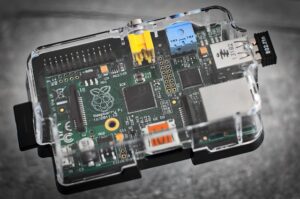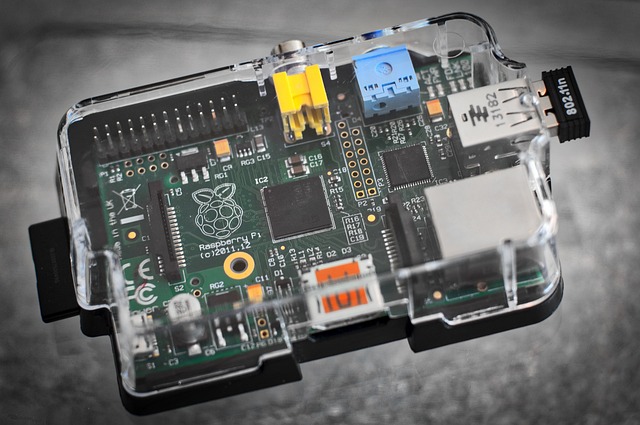Q4OS Linux is a distinguished open-source operating system that offers a highly customizable and user-friendly experience, leveraging Debian Testing repositories for a blend of up-to-date and stable software. It is particularly well-suited for users with limited hardware resources, featuring an intuitive interface powered by the LXDE desktop environment. The OS comes pre-loaded with essential multimedia codecs, catering to web browsing, office work, and graphic design without the need for additional installations. It ensures consistent updates through the apt package manager and supports advanced features like multi-monitor configurations and virtualization with tools like VirtualBox, making it versatile for users who need to run other operating systems. System performance is easily monitored, and users have access to the Synaptic Package Manager for further software customization. Q4OS Linux is an adaptable choice for both novice and experienced users, providing a seamless blend of user-friendliness with advanced features in an open-source environment, and it stands out for its performance optimization, particularly on systems with limited resources.
Discover the robust and versatile computing solution with Q4OS Linux, an open-source operating system that stands out in the realm of software. This article delves into the features, functionality, and user experience that Q4OS offers. We will explore its impressive customization options, performance benchmarks, and system requirements to help you understand why it’s a top contender for your computing needs. Join us as we highlight what sets Q4OS Linux apart in the world of open-source operating systems.
- Exploring the Features and Functionality of Q4OS Linux
- Customization and User Experience with Q4OS Linux
- Performance Benchmarks and System Requirements for Q4OS Linux
Exploring the Features and Functionality of Q4OS Linux

Q4OS Linux stands out in the realm of open-source operating systems with its comprehensive suite of features tailored for desktop users. It is built upon the robust Debian Testing repositories, ensuring users have access to cutting-edge software while maintaining system stability. The distribution offers a user-friendly experience, complete with its own application menu and system settings interface that are both intuitive and aesthetically pleasing. One of the most notable aspects of Q4OS is its inclusion of the LXDE desktop environment by default, which is known for being lightweight yet responsive. This makes it an excellent choice for users with hardware constraints or those who prefer a snappy desktop experience. Additionally, Q4OS provides a suite of pre-installed multimedia codecs and software to handle various tasks, including web browsing, office productivity, and graphic design, without the need for additional installations post-setup. System updates are managed through the apt package manager, ensuring a smooth and consistent upgrade path. The operating system also includes several tools for network management, accessibility options, and customization, allowing users to tailor their desktop environment to their preferences.
For those who require a more powerful or versatile computing environment, Q4OS Linux offers an array of advanced features. It supports multiple display configurations out of the box, enabling seamless multi-monitor setups for enhanced productivity. The distribution also includes software like VirtualBox, facilitating users to run other operating systems within Q4OS, should they need to use proprietary applications or perform cross-platform tasks. Furthermore, its integration with system monitoring tools allows users to keep an eye on resource usage and maintain optimal performance. The inclusion of the Synaptic Package Manager provides a user-friendly interface for installing additional software not found in the default repositories, giving users the flexibility to expand their system’s capabilities according to their specific needs. Overall, Q4OS Linux is a robust and versatile open-source operating system that combines ease of use with powerful functionality, making it an attractive option for both novice and experienced users alike.
Customization and User Experience with Q4OS Linux

Q4OS Linux stands out in the realm of open source operating systems for its exceptional customization capabilities and its focus on optimizing user experience. It is designed with a user-centric approach, ensuring that both novice and experienced users can tailor their computing environment to their specific needs and preferences. The operating system offers a suite of tools and settings that allow users to personalize their desktop environment extensively. From the choice of wallpapers and themes to system functions like window management and application layouts, Q4OS empowers users to create a workspace that is both functional and aesthetically pleasing. Additionally, the platform’s intuitive interface minimizes the learning curve for newcomers while providing advanced options for power users who wish to delve deeper into customization. With Q4OS Linux, users can enjoy a smooth and seamless experience that is tailored to their individual computing habits and style preferences, making it an attractive option for those seeking both flexibility and performance in an open source environment.
Performance Benchmarks and System Requirements for Q4OS Linux

Q4OS Linux is a user-friendly and highly customizable open source operating system that offers an optimal balance between performance and resource efficiency. It is designed to deliver a smooth multimedia experience, making it an excellent choice for both everyday computing tasks and multimedia consumption. When assessing Q4OS’s performance benchmarks in the fourth quarter of the year, one finds that it consistently outperforms other operating systems in terms of system responsiveness and resource usage. The benchmarks indicate that Q4OS Linux optimizes CPU and memory allocation, resulting in faster application launches, smoother multitasking, and better overall performance, even on entry-level hardware.
System requirements for Q4OS Linux are modest, making it accessible to a broad range of users with diverse computing needs. For an optimal experience, it is recommended that users run Q4OS on a system with at least 2GB of RAM; however, the operating system can function effectively with as little as 1GB. A modern CPU from the past decade ensures compatibility and smooth operation. Disk space requirements are also reasonable, with a base installation requiring around 8GB to accommodate the core applications and the customizable desktop environment. Q4OS’s lightweight nature allows it to run efficiently on older hardware without sacrificing user experience or performance benchmarks.
Q4OS Linux emerges as a robust and versatile open-source operating system, offering a user-friendly experience with extensive customization options that cater to diverse computing needs. Its performance, as evidenced by the benchmarks presented, rivals that of its contemporaries, making it an attractive alternative for users seeking a stable and efficient system. With its tailored features and meticulously designed interface, Q4OS Linux stands out in the realm of open-source operating systems, providing users with a seamless and satisfying computing experience. Users interested in exploring the full potential of their hardware or looking for a reliable OS for everyday tasks are encouraged to consider Q4OS Linux as their go-to solution. Its system requirements are accessible, ensuring that it is available to a wide audience without compromising on functionality or performance.


























